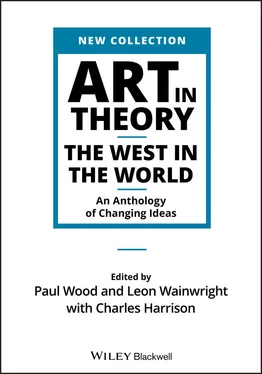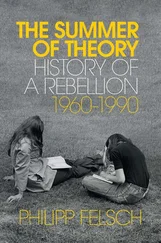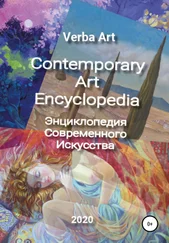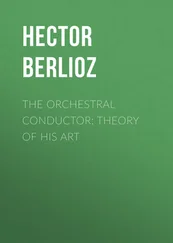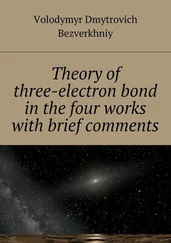The Great Mogul has seven thrones, some set all over with Diamonds; others with Rubies, Emeralds, and Pearls.
The largest Throne, which is set up in the hall of the first Court, is in form like one of our Field‐Beds, six foot long, and four broad. The Cushion at the back is round like a Bolster; the Cushions on the sides are flat.
I counted about a hundred and eight pale Rubies in Collets, about this Throne, the least whereof weighed a hundred Carats; but there are some that weigh two hundred. Emeralds I counted about a hundred and sixty, that weighed some threescore, some thirty Carats.
The under‐part of the Canopy is all embroidered with Pearls and Diamonds, with a Fringe of Pearls round about. Upon the top of the Canopy, which is made like an Arch with four panes, stands a Peacock, with his tail spread, consisting all of Saphirs, and other proper coloured Stones; the Body is of beaten Gold, enchased with several Jewels; and a great Ruby upon his breast at which hangs a Pearl, that weighs fifty Carats. On each side of the Peacock stand two nosegays, as high as the Bird, consisting of several sorts of Flowers, all of beaten Gold enamelled. When the King seats himself upon the Throne, there is a transparent Jewel, with a Diamond appendant, of eighty or ninety Carats, encompassed with Rubies and Emraulds, so hung that it is always in his eye. The twelve Pillars also that uphold the Canopy, are set with rows of fair Pearl, round, and of an excellent Water, that weigh from six to ten Carats apiece. At the distance of four feet, upon each side of the Throne are placed two Parasols, or Umbrellos, the handles whereof are about eight foot high, covered with Diamonds; the Parasols themselves are of crimson Velvet, embroidered and fringed with Pearls.
This is the famous Throne which Tamerlane began, and Cha‐jehan finished; which is really reported to have cost a hundred and sixty Millions, and five hundred‐thousand Livres of our Money.
1 1 I am most grateful to Peter Dronke for his help in interpreting the awkward and archaic words in this difficult sixteenth‐century text. Thanks are also due to Peter Bury for his suggestions.
2 2 Braça or ‘arms’ is an ancient measure of length. It is 7 geometric feet (1 geometric foot = 33 cm.). Translated into our terms the temple is approximately 245 ft. long (35 braças), 175 ft. wide (25 braças), and 28 ft. high (4 braças).
3 3 The measure palmo is 22 cm. Therefore the giant is approximately 14 ft. high.
IB Across the Ocean Sea
IB1 Christopher Columbus (1451–1506) Two texts from his first voyage to America
Many documents survive from Columbus’s four voyages to the Caribbean between 1492 and 1504. Some were written by Columbus himself, and some of these mention the customs and material culture of the people he encountered. Other writers, however, also do this, and in greater depth (cf. IB3–6, 8 and 9). We have therefore chosen to represent Columbus himself with two texts from the first voyage. These are not concerned with material culture, and certainly not with art, but we feel justified in reproducing them in the present anthology, partly for the sheer magnitude of the event and partly for what they reveal of the strange confusions and mixed motives attendant on Europeans’ first encounters with the New World. Columbus’s log‐book from the first voyage has been lost, but not before a digest of it was made by Bartolomé de Las Casas. His account frequently uses Columbus’s own words. The first extract here is from the very beginning of the voyage, and it connects it with both the expulsion of the Moors from Spain (which also happened in 1492) and the desire to convert any heathens encountered, especially Muslims, to Christianity. The second selection is from a letter written by Columbus to the Spanish sovereigns Ferdinand and Isabella. This was composed on the return journey as the voyagers reached the Canary Islands, and it was sent ahead to Madrid as a digest of the discoveries. It is largely concerned to advertise the merits of the new world in terms of its fruitfulness and prosperity, not least the presence of gold. It shows that Columbus believed himself to have found ‘Cathay’, and once again holds out the prospect of the conversion of its inhabitants to Christianity. A recently discovered version of this text (unavailable for the present anthology), makes the further claim that an original purpose of the voyage had been to press on to Jerusalem. Regarded in this light, the epochal discovery of America can almost be seen as a continuation of the Crusades: as if by fighting their way overland from China, the Spanish could retake the centre of the world from Islam for Christianity, in an extension of their already accomplished task of retaking Spain itself. Be that as it may, the discovery of the New World was a product of the ideological and political conflicts of the old one; a simple commercial venture, it certainly was not. Our selections are taken from The Four Voyages of Christopher Columbus , edited and translated by J. M. Cohen, Harmondsworth: Penguin Books, 1969, pp. 37–8, 115–20 and 122–3.
from the digest of his logbook
On 2 January in the year 1492, when your Highnesses had concluded their war with the Moors who reigned in Europe, I saw your Highnesses’ banners victoriously raised on the towers of the Alhambra, the citadel of that city, and the Moorish king come out of the city gates and kiss the hands of your Highnesses and the prince, My Lord. And later in that same month, on the grounds of information I had given your royal Highnesses concerning the lands of India and a prince who is called the Great Khan – which means in Spanish ‘King of Kings’ – and of his and his ancestors’ frequent and vain applications to Rome for men learned in the holy faith who should instruct them in it, your Highnesses decided to send me, Christopher Columbus, to see these parts of India and the princes and peoples of those lands and consider the best means for their conversion. For, by the neglect of the Popes to send instructors, many nations had fallen to idolatory and adopted doctrines of perdition, and your Highnesses as Catholic princes and devoted propagators of the holy Christian faith have always been enemies of the sect of Mahomet and of all idolatries and heresies.
Your Highnesses ordained that I should not go eastward by land in the usual manner but by the western way which no one about whom we have positive information has ever followed. Therefore having expelled all the Jews from your dominions in that same month of January, your Highnesses commanded me to go with an adequate fleet to those parts of India. In return you granted me great favours bestowing on me the titles of Don and High Admiral of the Ocean Sea and Viceroy and perpetual governor of such islands and mainland as I should discover and win or should in future be discovered and won in the Ocean Sea….
I departed from the city of Granada on Saturday, 12 May, and went to the seaport of Palos, where I prepared three ships very suitable for such a voyage and set out from that port well supplied both with provisions and seamen. Half an hour before sunrise on Friday, 3 August, I departed on a course for the Canary Islands, from which possession of your Highnesses I intended to set out and sail until I reached the Indies, there to deliver your Highnesses’ letters to their princes and to fulfil your other commands.
* * *
FROM HIS LETTER TO FERDINAND AND ISABELLA
Since I know that you will be pleased at the great success with which the Lord has crowned my voyage, I write to inform you how in thirty‐three days I crossed from the Canary Islands to the Indies, with the fleet which our most illustrious sovereigns gave me. I found very many islands with large populations and took possession of them all for their Highnesses; this I did by proclamation and unfurled the royal standard. No opposition was offered.
Читать дальше
